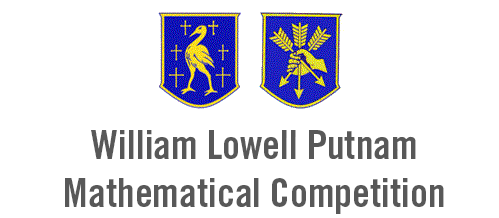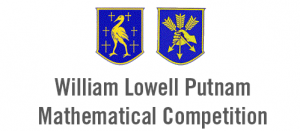Wesleyan Team Places in Top 5 Percent of Putnam Math Competition


“Consider an icosahedron with every edge labeled from 1 to 30. Color these edges red, white, or blue, such that no face has all three edges the same color or all three faces the same color. How many ways are there to do this?”
If you can solve this problem, you might have what it takes to participate in the annual William Lowell Putnam Mathematical Competition, a preeminent mathematics competition for undergraduate college students.
“The problems themselves are very difficult, often asking us to demonstrate that a general statement is true rather than to solve a specific problem, or if we do solve a specific problem, it is often a very complicated problem,” said competitor Sam Bidwell ’21. “For this particular question, which appeared on last year’s test, the solution involves complicated mathematics that I do not have the experience to properly explain within even five paragraphs to anyone who had not taken the prerequisite class, which was, as I recall, Abstract Algebra 2.”
Bidwell, along with Di Chen ’20, Haochen Gao ’21, Joe Cutler ’21, Morgan Long ’22, and Yaqian Tang ’21 were among 4,623 students from the U.S. and Canada to participate in the 2018 competition. Chen and Gao ranked in the top 500 individual competitors; and a team consisting of Bidwell, Chen, and Gao was ranked 27th out of 568 institutions (within the top 5 percent).
“Only particularly talented/brave students attempt the exam, and doing well on the exam is a great achievement,” said Dave Constantine, assistant professor of mathematics. “We’re very gratified to see our students perform so well against much larger institutions, but I will say that for those of us who work with these students and know their creativity and ingenuity as problem solvers, it is not a surprise.”
The competition, which took place on Dec. 1, 2018, consists of two 3-hour sessions, one in the morning and one in the afternoon. During each session, participants work individually on six challenging mathematical problems.
Prior to taking the test, students may enroll in the Math 211 course, Problem Solving for the Putnam. This course, taught by Constantine, explores problems and problem-solving techniques needed to participate in the Putnam competition. Particular emphasis is placed on learning to write clear and complete solutions to problems.
“The problems are very difficult and generally require significant creativity and insight, and often don’t involve a huge amount of mathematical background,” Constantine said. “To give you a sense of the difficulty of the exam, more than half of the participants nationwide scored 0 points–and this is an exam only taken by very dedicated math students!”
Students are allowed to take the test up to four times. Bidwell, a mathematics and physics double major, has full intentions to participate in every opportunity.
“I find it really fun to challenge myself,” he said. “Also, I found the Putnam a great way to spend the first Saturday of December!”
The Putnam began in 1938 as a competition between mathematics departments at colleges and universities and has grown to be the leading university-level mathematics examination in the world.

